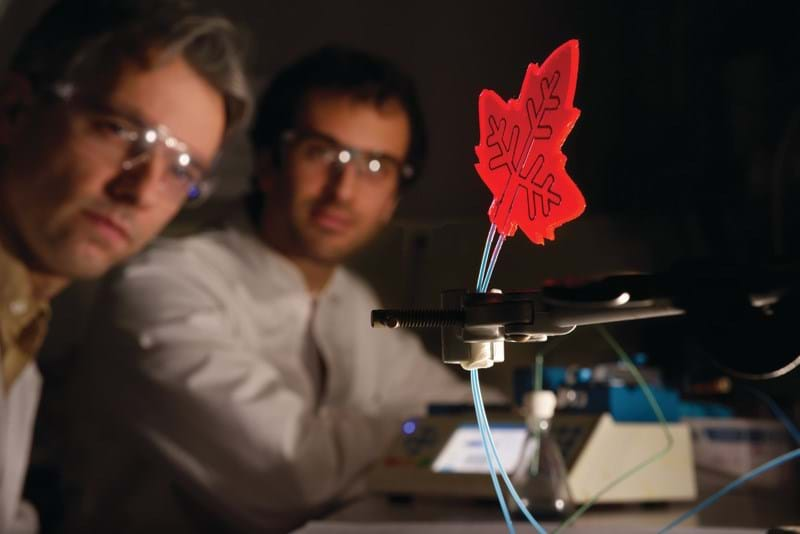Clouds defeated: real-time control system boosts solar chemicals production
CHEMICAL engineers have developed a control system costing less than €50 (US$61) that overcomes one of the major obstacles to processing chemicals with light.
Timothy Noël and his team at Eindhoven University of Technology announced last year that they had developed a leaf-shaped photo-microreactor that focuses energy from sunlight falling on the ‘leaf’ and directs it to the ‘veins’ – or micro-channels running through the leaf – where it is used to convert the flowing reactants. A key challenge to the system is that clouds scudding across the sky change the intensity of light falling on their mini-factory leaves, which affects production yields.

"If there is too much light, you get unwanted by-products and if there is too little light, the reactions do not take place or do so too slowly," Noël says. "Ideally, the system should automatically adapt to the amount of incoming sunlight."
The team set out to overcome this challenge by developing a reaction control system that automatically adjusts the residence time of the reaction mixture in the system depending on the intensity of light falling on the leaf.
The result is a feedback system made up of three simple elements costing less than €50: a light sensor measures the intensity of light falling on the leaf and sends a signal to a microcontroller which in turn adjusts the rate that a pump pushes the reactants through the veins.
To test their system, the team chose a model reaction that involved photo-oxygenating 1,9-diphenylanthracene using methylene blue as singlet oxygen photosensitiser. They put the system on a trolley and wheeled it out on to the roof of a university building. The system kept production stable for an hour, achieving yields of between 86–97%. The same system without the feedback loop varied significantly between 55–97%. The team reports that the feedback loop increased the average yield by around 20%.
Noël says the development brings a cheap and sustainable reactor considerably closer to being able to produce chemical products on a large scale, wherever you want, with only sunlight as an energy source.
"It is inevitable that energy prices will rise. And with a source of energy like the sun that is free and available, these kinds of technological solutions can make the difference."
The team is now investigating how well its control system works with a large-scale photoreactor system.
Green Chemistry: DOI: http://doi.org/cnrt
Recent Editions
Catch up on the latest news, views and jobs from The Chemical Engineer. Below are the four latest issues. View a wider selection of the archive from within the Magazine section of this site.




